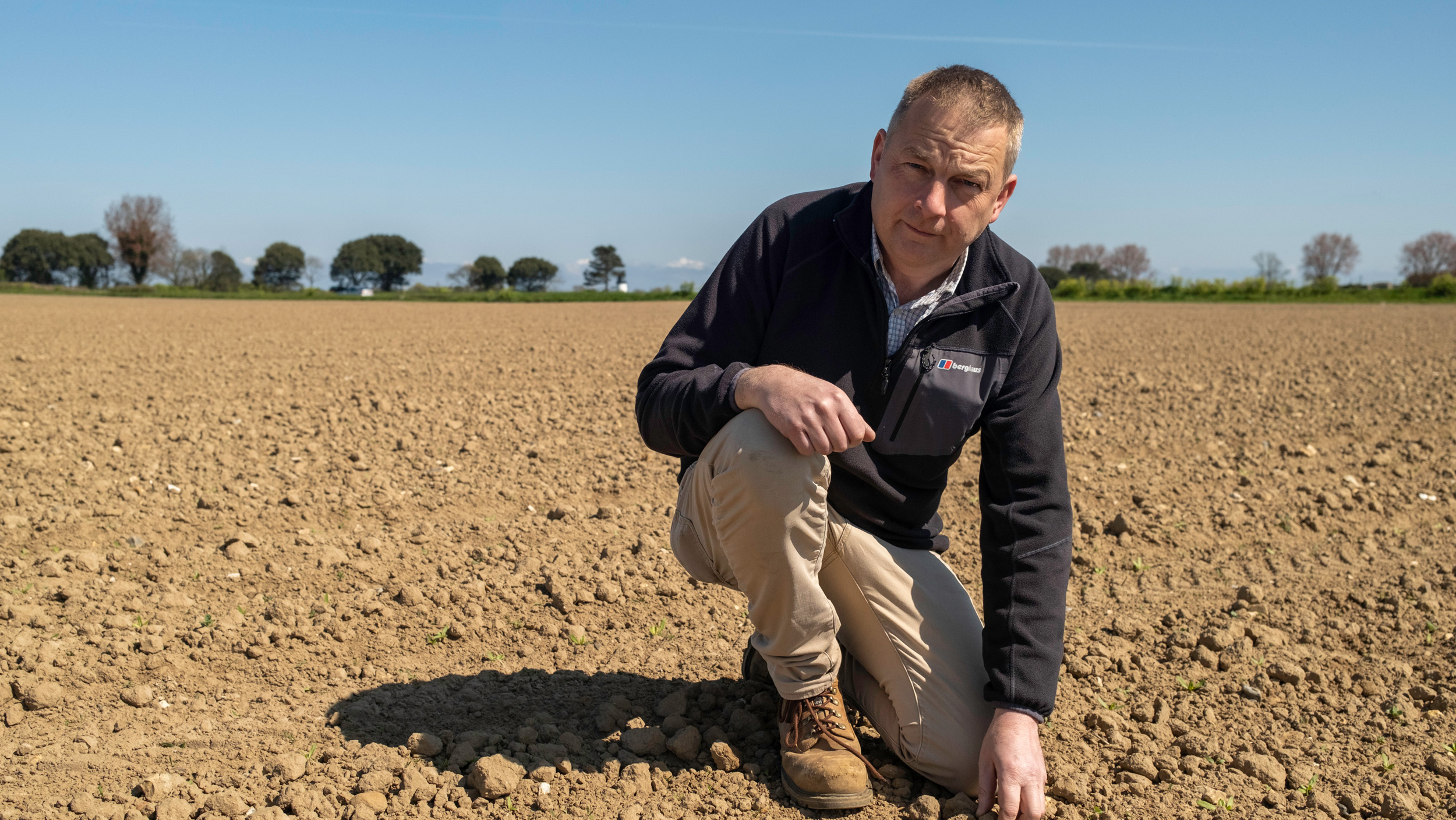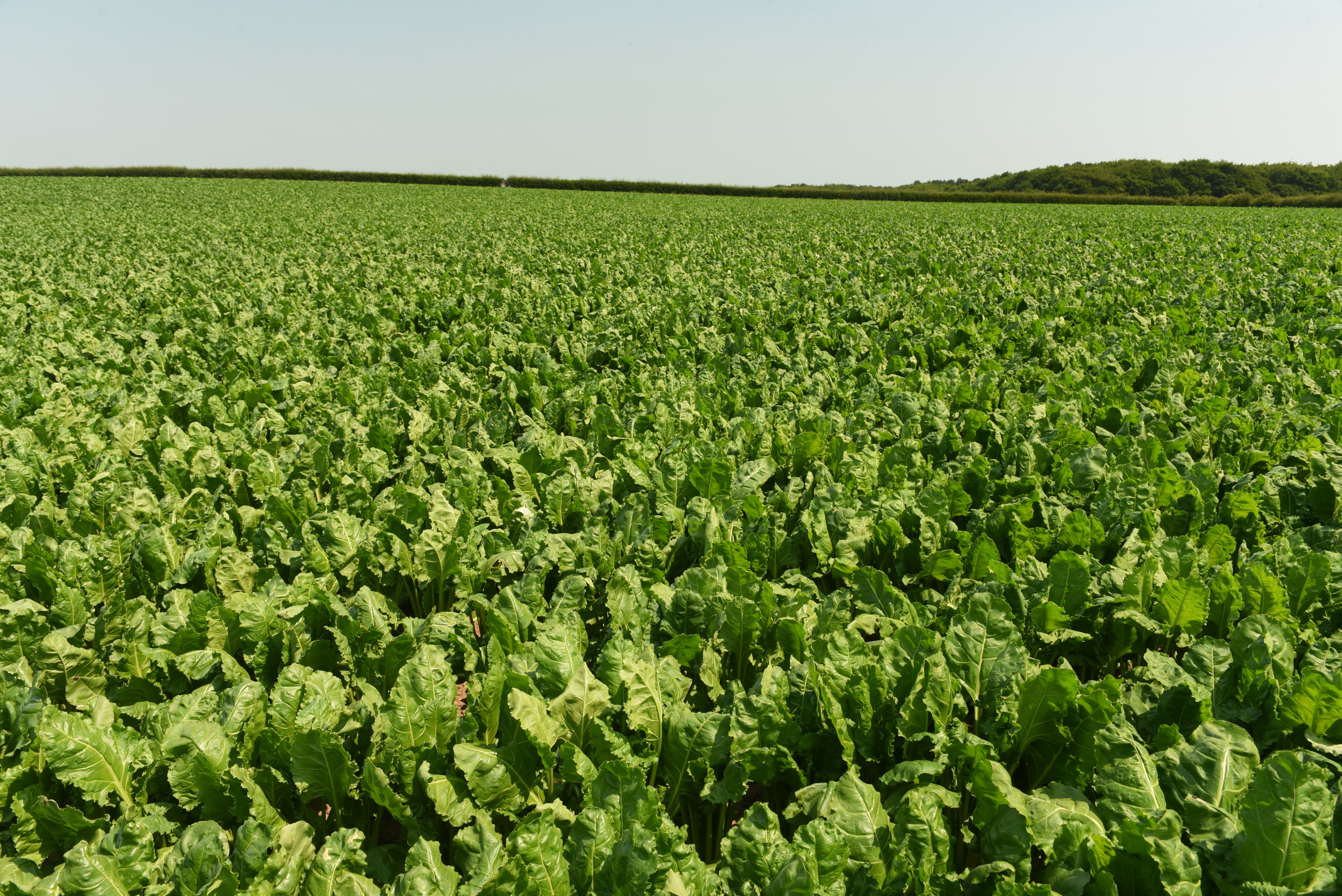Thinking SMART with sugar beet weed control
01.08.2022
WEED CONTROL STRATEGY
Across 1413 hectares of arable cropping at Billockby Farms near Acle, Norfolk, the rotation is based around potatoes, but there is a sizeable parcel of land where sugar beet was simply not a cropping option because of a historic weed beet problem.
“It has not been possible to grow sugar beet on this area of land for at least 15 years. Until the launch of the CONVISO® SMART system, the only viable break crop was vining peas,” says Mr Benton.
“The land is surrounded by woodland and when we have tried oilseed rape in the past it has suffered intolerable damage by pigeons over the winter months. The margin from vining peas has been poor for several years so the opportunity to grow sugar beet again is welcome,” he adds.
It has not been possible to grow sugar beet on this area of land for at least 15 years.
The 2022 season will be his second with CONVISO® SMART. As part of a series of trials organised by breeder KWS, Billockby Farms serves as the demonstration crop for the Cantley factory area. The trials largely focus on the performance of the dedicated herbicide, CONVISO® ONE (foramsulfuron + thiencarbazone-methyl) in comparison with a standard programme built around phenmedipham, ethofumesate and metamitron across four, 2.5ha plots.
- Plot 1: Farm standard programme comprising three sprays of: phenmedipham, ethofumesate and metamitron + oil and trifulsulfuron-methyl where needed
- Plot 2: phenmedipham, ethofumesate and metamitron f/b CONVISO® ONE
- Plot 3: CONVISO® ONE
- Plot 4: CONVISO® ONE f/b metamitron, with phenmedipham if needed
The weed control has been noteworthy, observes Mr Benton. “The CONVISO® ONE herbicide did a very good job. The residual component may have been aided by it being a wet year, but the control of fat-hen and other germinating weeds was impressive,” he says.
As good as the weed control achieved was, there were instances where a few weeds crept through.
“It may be a reflection of the season, but we had a few instances where field speedwell and groundsel came through it. These are not yield-robbing weeds, but their presence was obvious.”
Spray timing was based on fat-hen at four true leaves as advised by KWS and Bayer.
“The timing suits us but what is more important is the flexibility to spray during the day when it is most convenient or when conditions are best. The crop safety of the herbicide is excellent. You could see to the row which plants had received CONVISO® ONE and which hadn’t,” he says.
“Within a few weeks, however, the crop receiving standard herbicides had recovered and there was no evidence to suggest that the better crop safety of the CONVISO® ONE translated into a yield advantage. Whether that is true this year with the anticipated aphid pressure remains to be seen,” he adds.
The varieties perform well and show good vigour.
YIELD ON FARM
Come harvest and the CONVISO® SMART crop yielded largely as expected at 5% less than the classic beet grown near-by. “The yield difference was in line with what KWS said and as is reported by the BBRO so there were no surprises,” says Mr Benton.
While he concedes that CONVISO® SMART is yet to replace the classic beet across the farm, he remains of the opinion that the proposition of a single pass herbicide system holds great appeal.
“We had hoped to adopt the CONVISO® SMART system following our first-year experience. This would simplify our system and ease the sprayer workload. I am still to be convinced that we can achieve this largely because we still need to make a separate spray pass for volunteer potatoes and the farm’s standard herbicide programme works out to be a little cheaper,” he says.
The difference in system costs largely comes down to the ease with which the weed burden can be controlled and the expense at which it is achieved. In a typical year, three sprays of phenmedipham, ethofumesate and metamitron + oil are the minimum. In some situations, the use of triflusulfuron-methyl is required, and where volunteer potatoes are present, clopyralid is applied.
“The combined seed and herbicide costs of the CONVISO® SMART system, including a separate spray for volunteer potatoes, comes to about £473/ha after adjusting for a seed rate of 1.15 units/ha. This is about £15/ha more than comparable spend in the classic beet comprising seed and three passes of phenmedipham and metamitron + oil and a spray of clopyralid.”
Of the 260-hectares of sugar beet sown in 2022, 65-ha will be CONVISO® SMART (including the 10-ha as part of the KWS trial).
The herbicide strategy will again seek to compare CONVISO® ONE with the farm standard. The KWS trial will follow a similar programme to past seasons, but the farm's own crop has received a pre-emergence herbicide as an additional measure to afford some flexibility with the timing of CONVISO® ONE application.
“In many respects I am pro-CONVISO,” says Mr Benton. “The varieties perform well and show good vigour and it is clear that standard herbicides, even at low doses, check crop growth. On the other hand, the yield penalty is 5% and the system costs more than we otherwise spend. If our classic beet were to require rogueing, tractor hoeing or a pass with a weed wiper, then the difference would be considerably smaller,” he says.
| Name: | John Benton |
| Region: | Norfolk |
| CONVISO® SMART grower since: | 2021 |
| CONVISO® SMART area: | 65 hectares |
| Reasons for using CONVISO® SMART: | Weed beet control, Convenience, Crop Safety |



